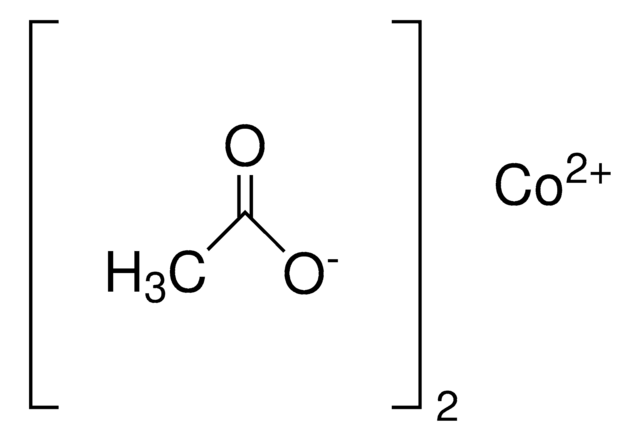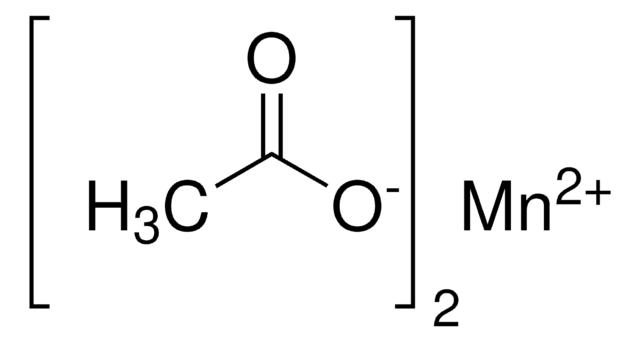244066
Nickel(II)-acetat Tetrahydrat
98%
Synonym(e):
Essigsäure Nickel(II)-salz
About This Item
Empfohlene Produkte
Qualitätsniveau
Assay
98%
Form
powder
Eignung der Reaktion
core: nickel
reagent type: catalyst
Dichte
1.798 g/mL at 25 °C (lit.)
SMILES String
[H]O[H].[H]O[H].[H]O[H].[H]O[H].CC(=O)O[Ni]OC(C)=O
InChI
1S/2C2H4O2.Ni.4H2O/c2*1-2(3)4;;;;;/h2*1H3,(H,3,4);;4*1H2/q;;+2;;;;/p-2
InChIKey
OINIXPNQKAZCRL-UHFFFAOYSA-L
Suchen Sie nach ähnlichen Produkten? Aufrufen Leitfaden zum Produktvergleich
Allgemeine Beschreibung
Anwendung
- Used as a precursor material in the hydrothermal synthesis of nanostructured nickel diselenide (NiSe2).
- Used as a precursor in the synthesis of the salamo-based dinuclear nickel(II) complex.
- Used as a precursor material in the synthesis of nickel oxide (NiO) via sol-gel method. Nickel oxide can be tailored for various applications, including electrochromic devices, gas sensors, and lithium-ion batteries.
Signalwort
Danger
Gefahreneinstufungen
Acute Tox. 4 Inhalation - Acute Tox. 4 Oral - Aquatic Acute 1 - Aquatic Chronic 1 - Carc. 1A - Muta. 2 - Repr. 1B - Resp. Sens. 1 - Skin Sens. 1 - STOT RE 1
Lagerklassenschlüssel
6.1C - Combustible acute toxic Cat.3 / toxic compounds or compounds which causing chronic effects
WGK
WGK 3
Flammpunkt (°F)
Not applicable
Flammpunkt (°C)
Not applicable
Persönliche Schutzausrüstung
Eyeshields, Faceshields, Gloves, type P3 (EN 143) respirator cartridges
Hier finden Sie alle aktuellen Versionen:
Besitzen Sie dieses Produkt bereits?
In der Dokumentenbibliothek finden Sie die Dokumentation zu den Produkten, die Sie kürzlich erworben haben.
Kunden haben sich ebenfalls angesehen
Unser Team von Wissenschaftlern verfügt über Erfahrung in allen Forschungsbereichen einschließlich Life Science, Materialwissenschaften, chemischer Synthese, Chromatographie, Analytik und vielen mehr..
Setzen Sie sich mit dem technischen Dienst in Verbindung.














